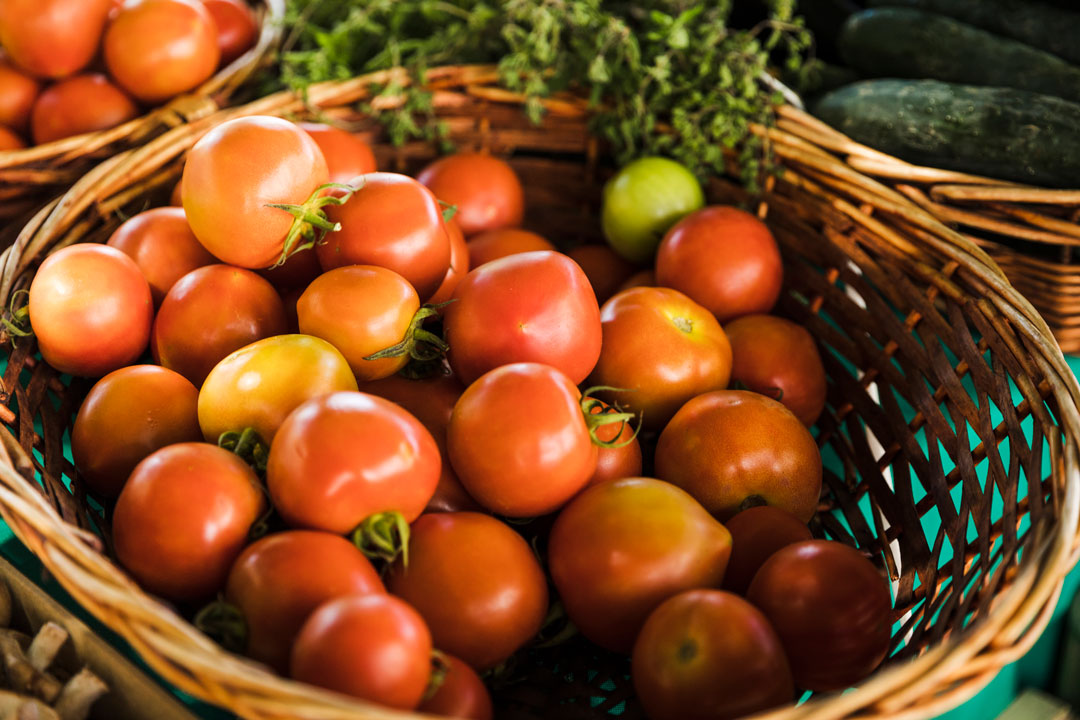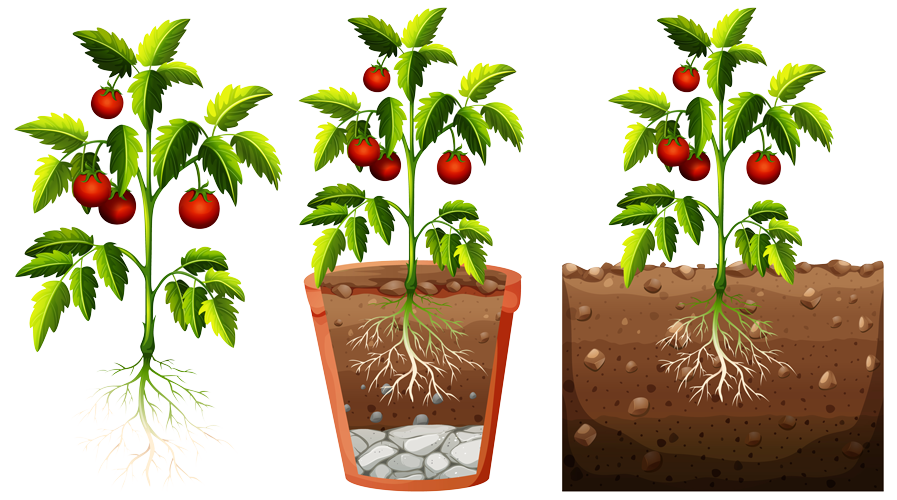
Variety: Choose a tomato variety based on the fruit’s characteristics, growth habits, and end-use. For determinate growth habits, choose from Alboran, Rodade, Roma, Floradade, Red Khaki, Rossol, UC82B, Heinz, and Fortune Maker F1. For indeterminate growth habits, choose from Money Maker, Adelaide F1, Thomas F1, Raissa F1, and Star 9030 F1.
Soil pH, Temperatures, and Seeding Chart:
Soil pH: Tomatoes grow well in soils with a pH range of 5.0-6.5.
Planting time and temperature (oC): Tomatoes grow well in hot weather if not too wet, and in cold weather if there is no frost.
Sowing depth (mm): Sow the seeds 10 mm deep in the soil.
Seed rate per hectare: Use 250 g of seed for 900-1500 mm spacing and 370 g of seed for 750 mm spacing.
Spacing (mm): For unstated or trellised plants, use a spacing of 450–600 mm between rows and 230 mm within the row. For staked or trellised plants, use a spacing of 300–500 mm between rows and 600 mm within the row.
Comments: Sow the seeds in a seedbed and transplant them after 6–8 weeks of emergence.
Planting:
Land preparation: Prepare the land by plowing with a soil-turning plow, followed by 4-5 plowings with a country plow or harrow. Level the land and create a fine tilth for better drainage. Raised beds of 120 cm width facilitate drainage during the rainy season.
Nursery bed preparation: Raising seedlings in float trays is recommended. The tomato can be grown in any season as it is a day-neutral plant. Treat the seed with fungicides like Captan or Thiram 2g/kg of seed.
Mainfield land preparation: Apply 25 t/ha of well-decomposed manure or compost 4-6 weeks before transplanting. Use raised beds that are 120 cm wide.
Staking or trellising: Use stakes or trellises to keep the plants upright, prevent contact with the soil, and improve air circulation. Staking or trellising improves the quality of the fresh market and increases the quantity of marketable produce.

Fertilizer Requirement:
Basal dress: Use Seedfert (7:20:7) or tobaccofent (6:18:15) at the rate of 1,000–1,500 kg/ha.
Top dress: Apply ammonium nitrate and potassium nitrate after establishment, and early fruit-bearing stage every 21 days at a rate of 80–100 kg/ha.
Manure: Work in 25–50 t/ha of well-decomposed manure or compost it into the soil for 4-6 weeks before transplanting.
Weeds, Pests, and Disease:
Control bacterial canker, spot, and wilt by using healthy seeds, rotating crops, and avoiding waterlogged areas. For other weeds, pests, and diseases, refer to the weed, pest, and disease tables and IPM section.
Physiological disorders:
Control blossom end rot by growing resistant cultivars and applying foliar applications of calcium chloride at transplanting time.
Control puffiness by applying sound nutrients.
Control sunscald by being careful not to overexpose fruits to the sun when pruning and harvesting.
Use cultivars that are tolerant to concentric/radial fruit cracking, such as Floradade and Rodade.
Harvesting:
Harvest tomatoes at the following stages:
Pale blossom-end


















